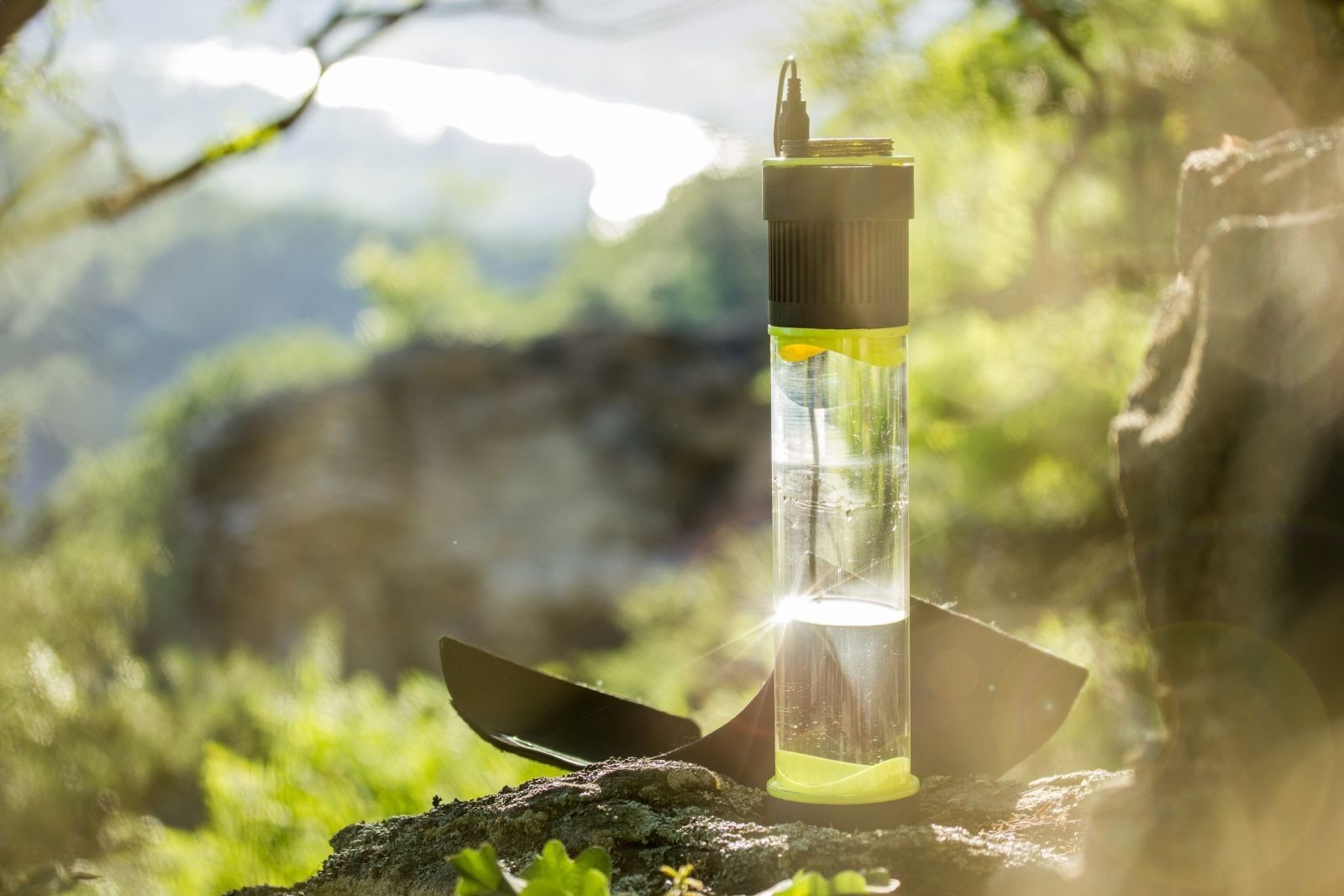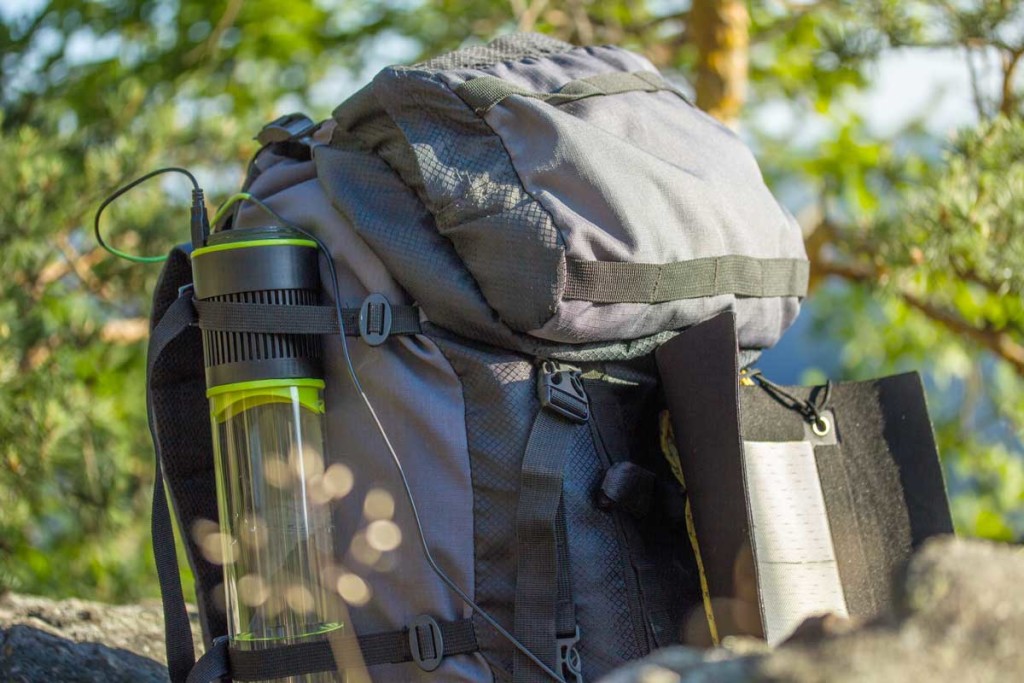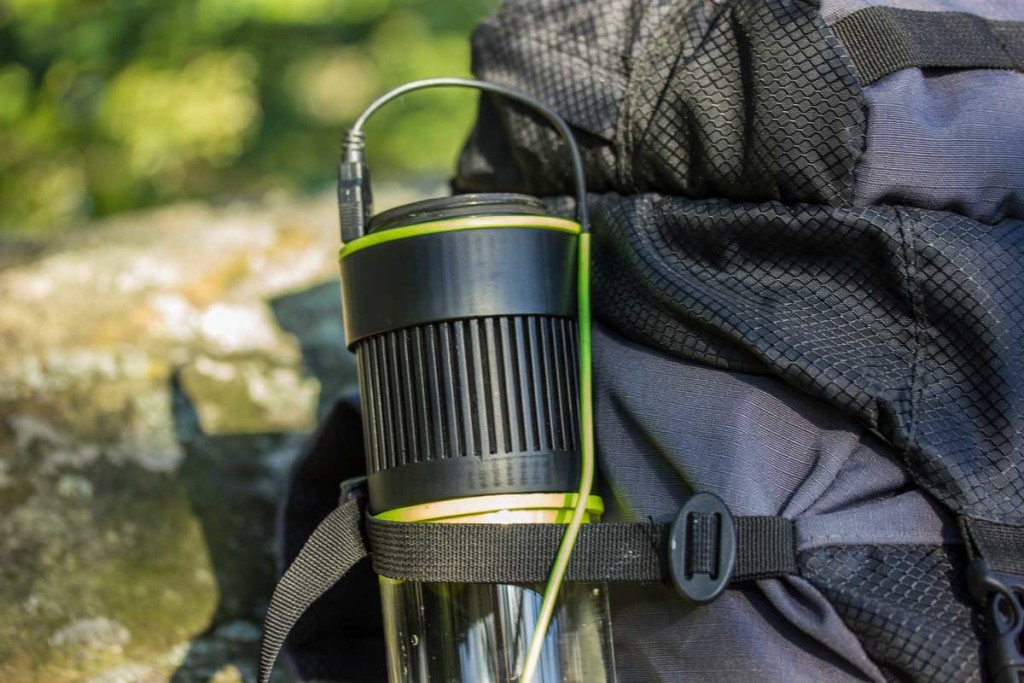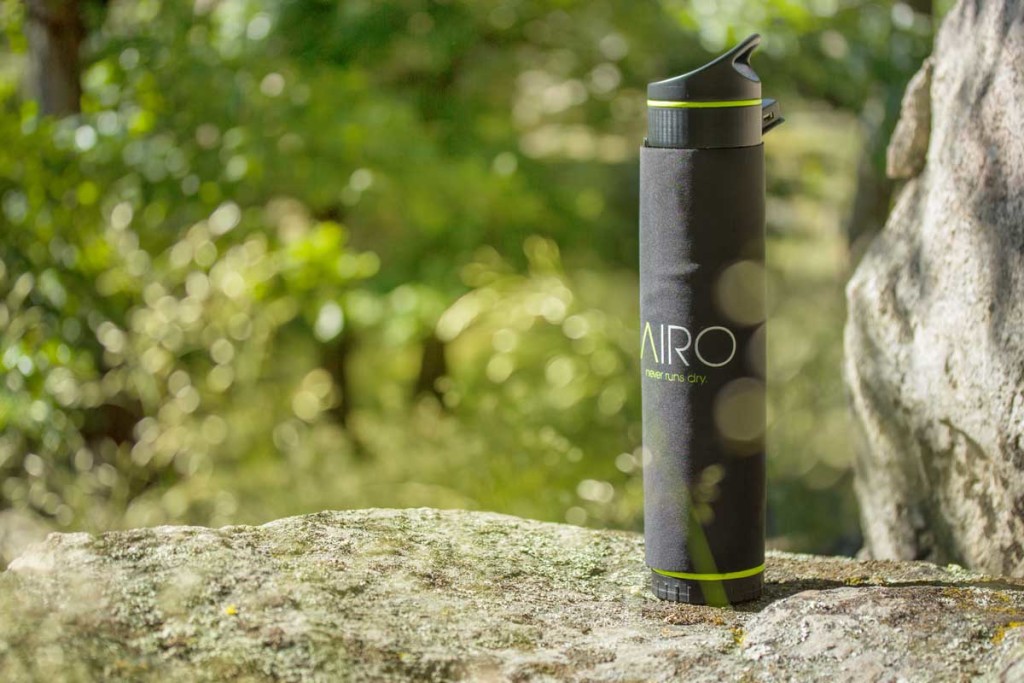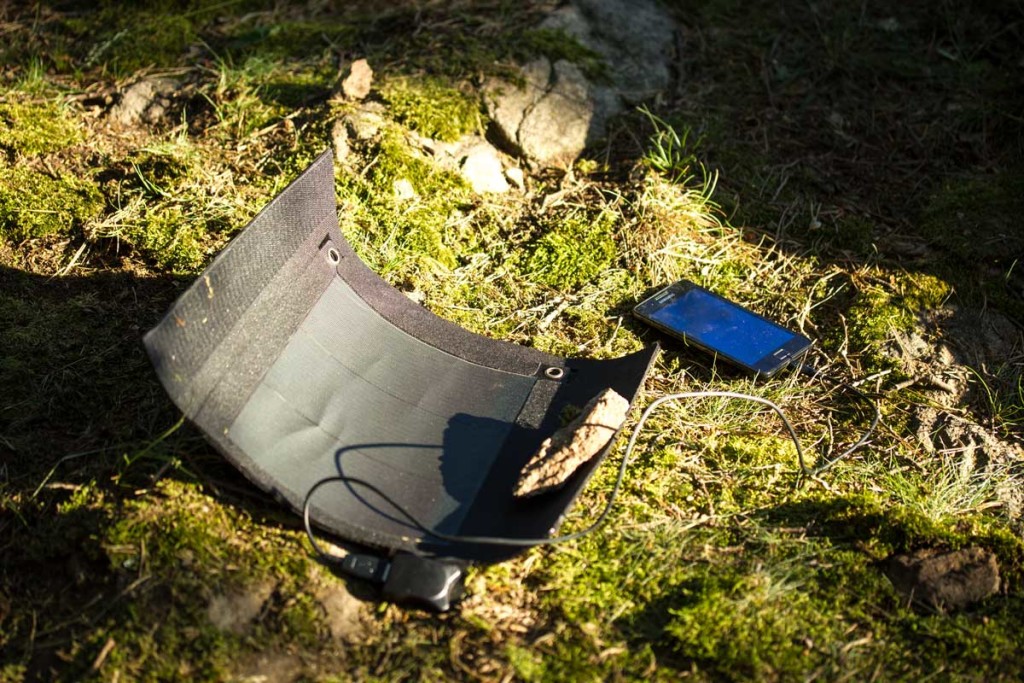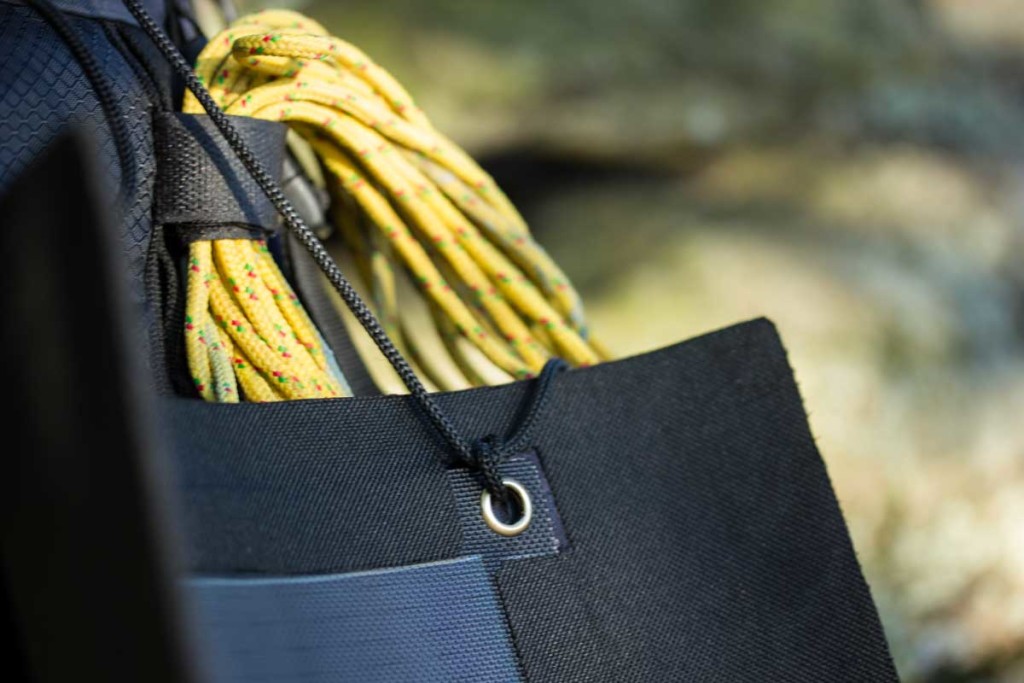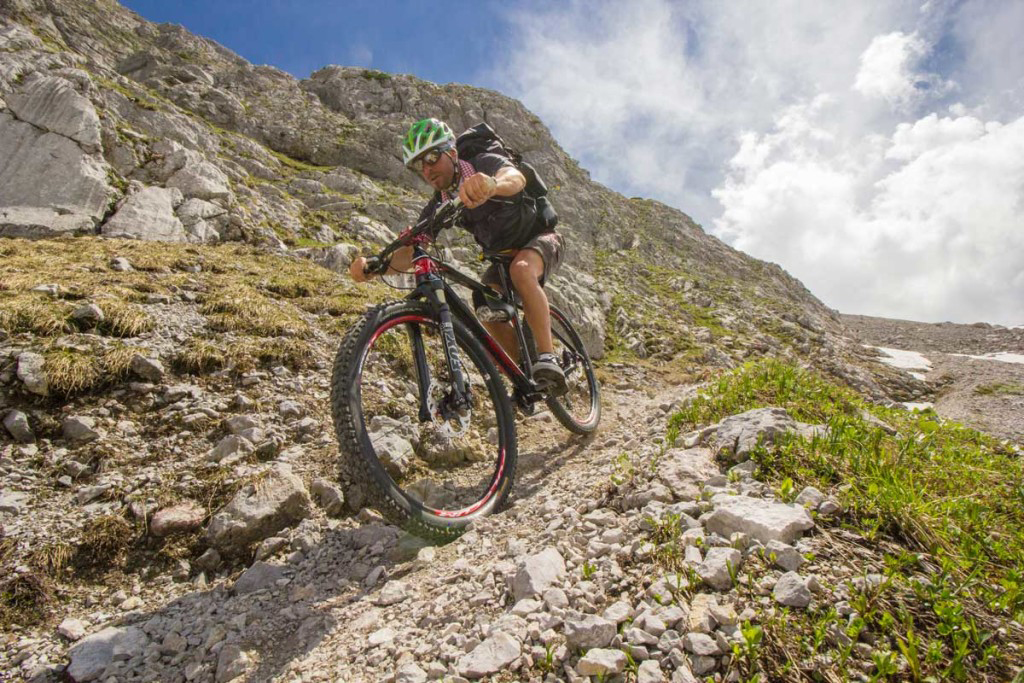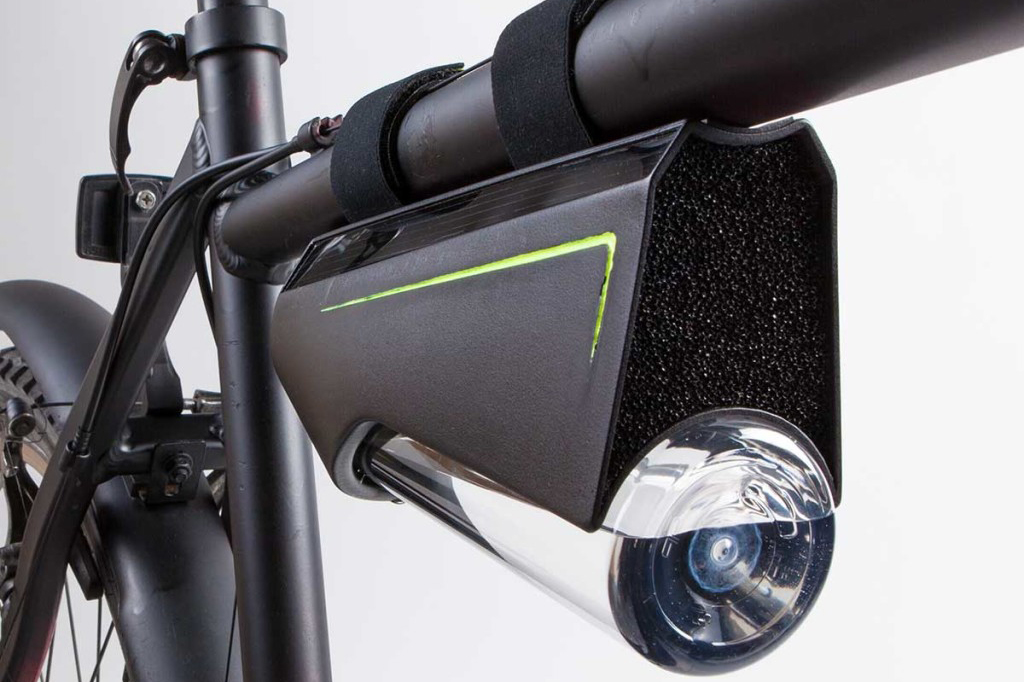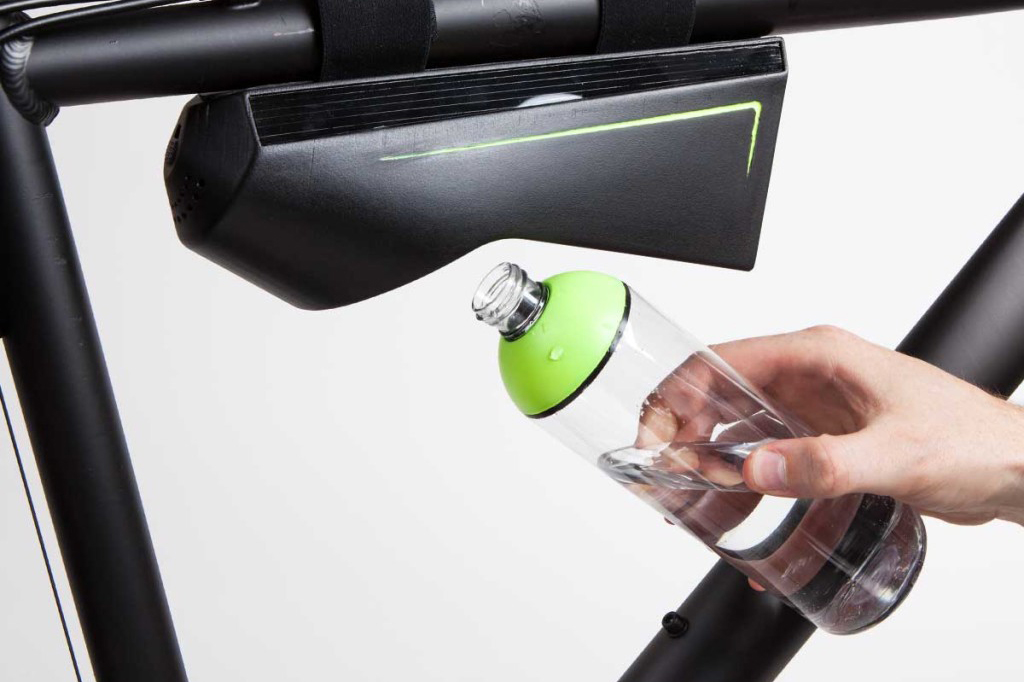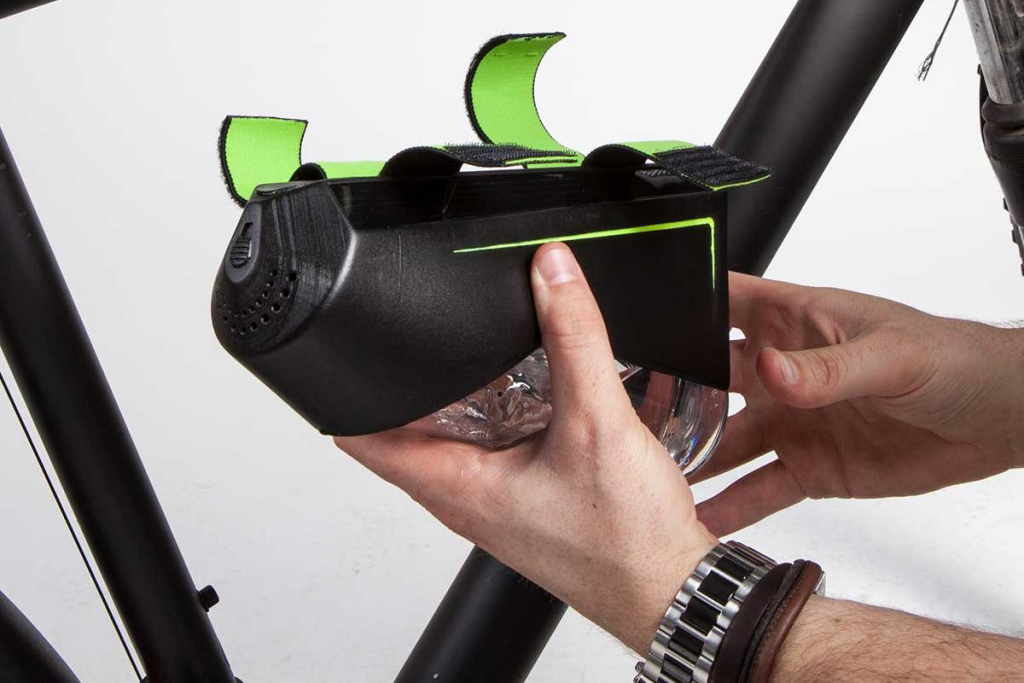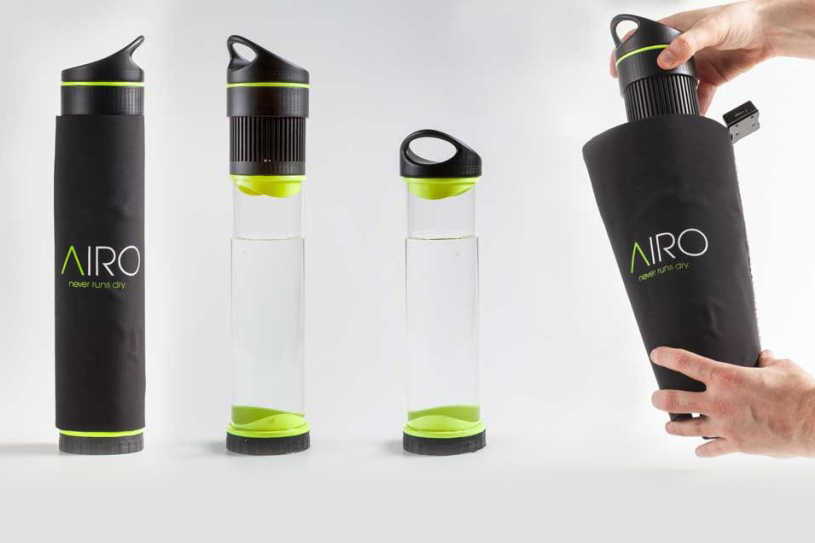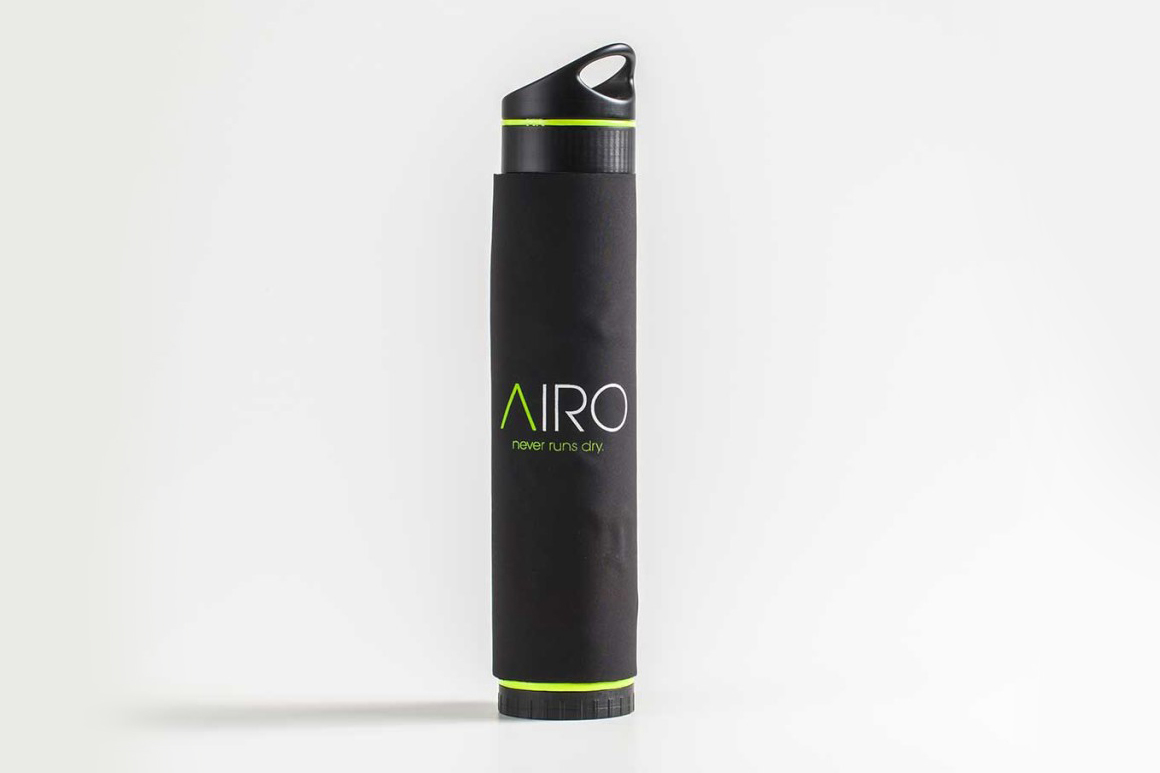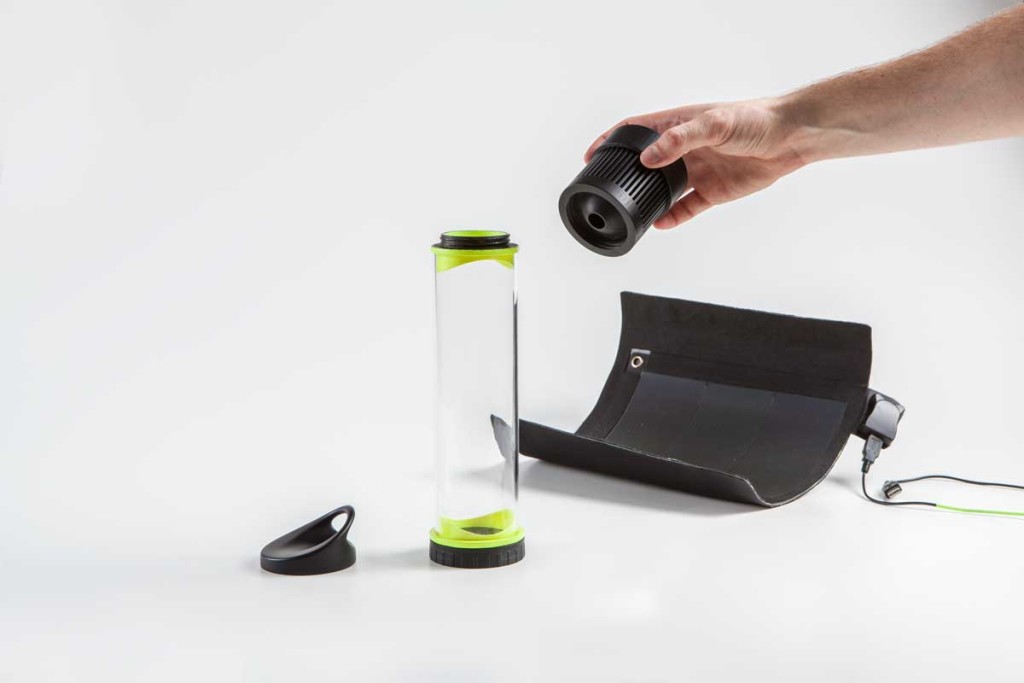In case you didn’t hear when it made news back in July 2015, Fontus is essentially a condensation-gathering system. The idea is that you can have a full bottle of water without carrying it along or planning your routes around water access, making it great for the great outdoors.
The initial design strapped onto the top tube of a bicycle and relied on air flow from cycling to get air to pass into a dual-chambered, solar-powered Peltier element. Air pulled into this element condenses into water which drips into the attached bottle. This bike-friendly design is still in place, and is now called Fontus Ryde with the addition of an IP54 filter to keep out contaminants.
In addition there’s a new Fontus version: a stand-alone bottle for those who make outdoor excursions without a bike. Called Fontus Airo, it uses a solar panel to power a fan that pulls humid air through the filter into the condensation chamber. The panel conveniently wraps around the bottle like a case when not in use. In both cases you can use capsules to remineralize the water, if you want.
One reader of the concept pitch (we’re looking at you Robert Winters) pointed out that keeping a survival straw on hand is an obvious fix if you’re in a situation where you may run out of water. That’s a great solution for those who are going to be near water or know how to find it in a survival situation. Those who don’t know how, or who don’t want to go through the trouble, have other options for filtering water, but none that pull it directly from the air while you do something else.
It’s important to note Fontus isn’t made for areas with significant air pollution, like some cities. An IP54 rating means the filters protect against dust and low-pressure jets of water — but that’s it. This is what you bring on extended journeys, hiking, camping, etc., not for your daily commute.
Related: Check off these items from your list for your next outdoor adventures
Also remember that the condensation isn’t spontaneous. It varies depending on the temperature and humidity of the air. The Airo pulls a little more than the Fontus over time; over the course of an hour, at 85 degrees (Fahrenheit) and 60 percent humidity, the Ryde will pull about 2-300ml or about six and a half to about ten ounces, while the Airo pulls 3-4ooml.
Such freedom isn’t cheap, however. Backers need to pledge at least $165 to grab a Fontus Ryde at the early bird level, while the Airo runs $250 for early-bird customers. The campaign has already drawn over $200,000 in backing, far beyond its $30,000 goal. Delivery to backers is expected in April 2017.
Update on 5-16-2016 by Aliya Barnwell:
It seems the math is off for the Fontus systems. A YouTuber named Thunderf00t took a close look at the claims, explaining the science behind it and pointing out it’s basically a mini peltier dehumidifier (which already exists).
The breakdown focuses mostly on the Airo, the more efficient of the two bottles by Fontus’ own estimate. It uses a small solar panel to power a fan that pulls air through the housing. Before he even touched on the panel’s weaknesses, he broke down the 100 percent humidity rate and how that would be altered by temperature. Assuming that air on a day with 100 percent humidity you’d need 50,000 liters of air, harvested completely efficiently.
The problems with this are numerous. First, the water-power relationship was one liter per kW/hr, but how long that would take with the Airo’s tiny, portable solar panel, assuming it will generate 15 W? It broke down to about 60 hours of sunlight to get a liter of water. Since the sun doesn’t shine 24 hours a day, it would take something like three days to get a liter of water in the most ideal conditions.
But obviously, you’re rarely going to have 100 percent humidity and bright sunlight to power the device a the same time. If you have 100 percent humidity you’re probably going to have rain, which makes a dehumidifier like this pointless. He compared it to a flashlight that only works when the sun is up. And if it’s less humid or cloudy, someone dependent on this for water is in serious trouble. “If it’s hot and dry, you’re going to die of thirst,” Thunderf00t said.
Thunderf00t has also took apart the Artificial Gills and ripped the Hendo Hoverboard a new one.
